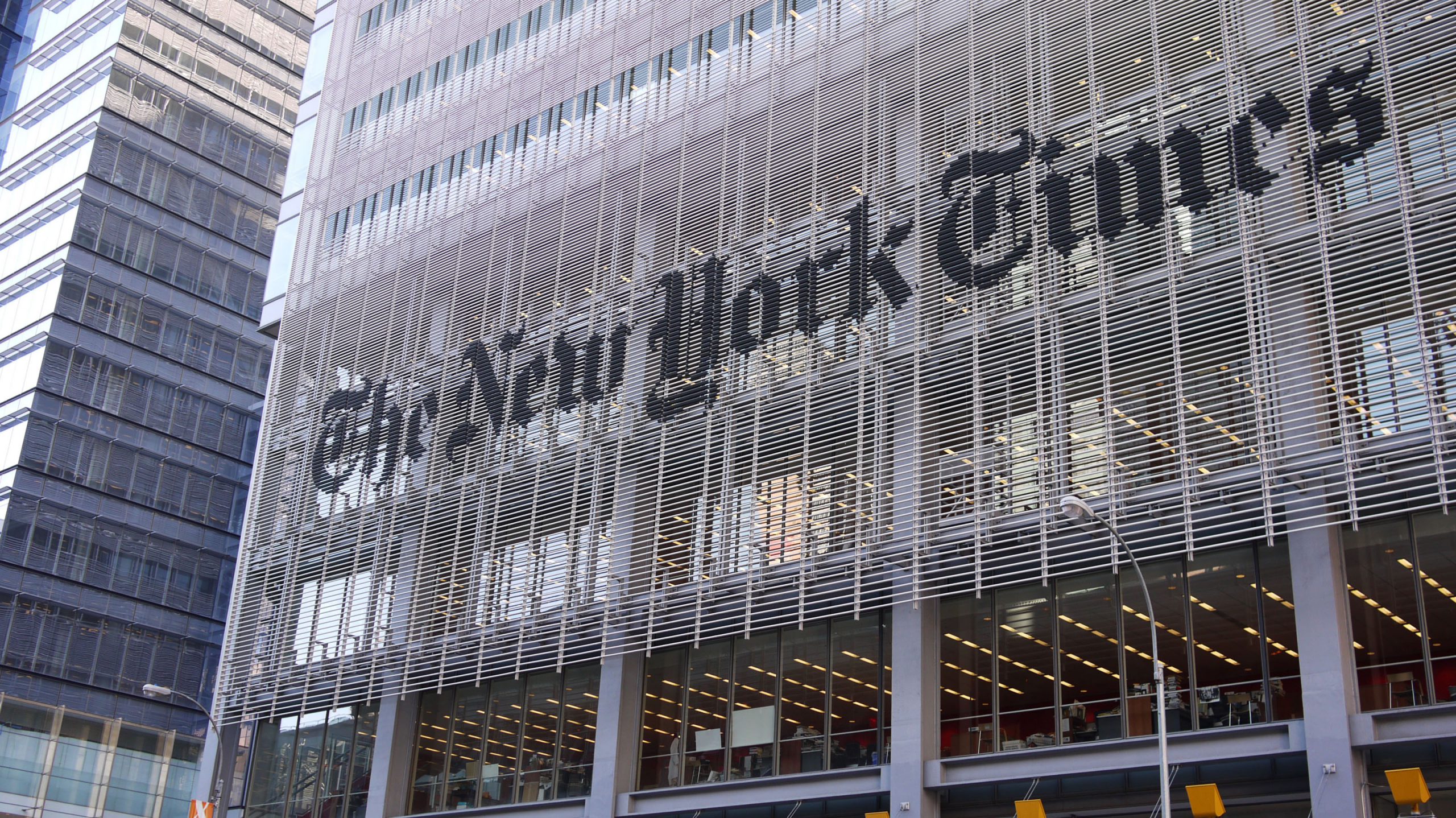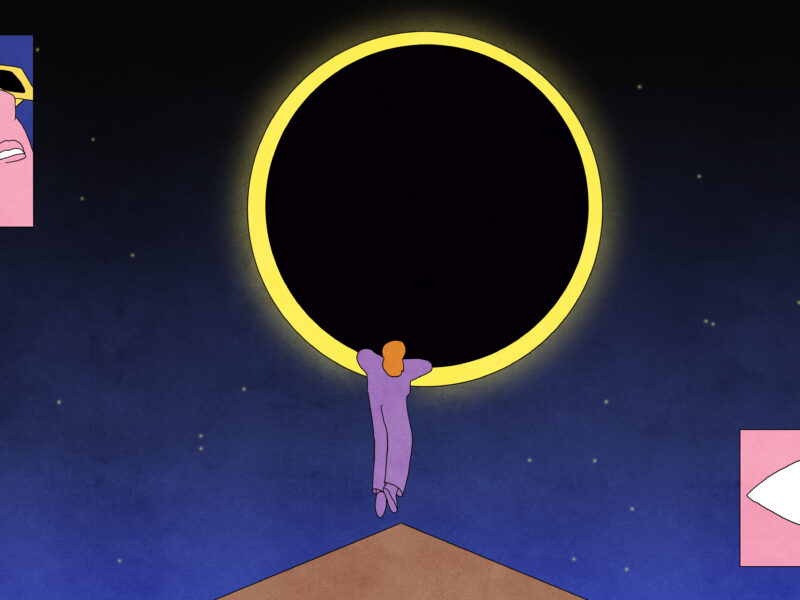When asked to name my favorite news sources, I offer my own portmanteau: The New National Public Yorker Times. I abhor the messaging from Fox News; it is anathema to my world view, so it’s difficult for me to admit this: but the truth is that the presenters on Fox are not completely wrong in claiming that “the liberal media” is united in delivering a single message. The New Yorker, The New York Times, NPR, The Atlantic, and all the other media outlets that college-educated liberals follow, are publishing more or less the same stories, presented through the same lens. This is a problem, and it has serious implications.
The root cause of this liberal echo chamber is in egregious editorial double-dipping. Thus WNYC, New York’s public radio station, broadcasts David Remnick, the editor of The New Yorker, as he interviews Ross Douthat, a columnist who is one of the token conservative opinion writers at The New York Times. The mainstream, moneyed, center-Left is headlined by a small cast of characters repeating the same views via various media outlets, sometimes pulling paychecks from more than one. I don’t see the point in having a subscription to The New Yorker when I can listen to NPR and have it read aloud to me. (And before you say it: the cartoons are on Instagram.)
A loss of nuance
The price we are all paying for this editorial echo chamber is high: we have lost nuance and diversity of opinion. This, in turn, has created a mood of disenfranchised populism on the Left, which feels quite justifiably that it has been marginalized and dismissed by the mainstream liberal media. Their resentment could splinter the Democratic Party — perhaps permanently.
During the Trump administration, The New National Public Yorker Times has published or broadcast all manner of fretful pieces about whether or not it is a good idea to give the radical Right a voice. It has, simultaneously, silenced the Left through a process of homogenization, by presenting viewers and readers with the same two dozen people talking to and writing for one another across fewer than a dozen media outlets, which together form the liberal news consumer’s canon.
The problem with this state of affairs is not the casual venality in one journalist receiving two salaries, while a thousand more are laid off in a single week. Nor is the real problem the self-congratulatory habit the New York Times, the New Yorker, and WNYC have of covering one another, or of substituting one another’s news stories and columns for original reporting, or of rewarding contribution to one of these outlets with a subscription to another.
The real and grave consequence of this liberal echo chamber is the loss of a vibrant, credible, political discourse on the mainstream Left in the United States.
Perils of ignoring local news
The implications have already become apparent. The New York Times, The New Yorker, and WNYC have failed abysmally to provide anywhere near sufficient coverage of the city from which they take their names and claim to represent. As a result, they missed the most important story of the 2018 midterm elections — the rise of Alexandria Ocasio-Cortez.
The New York Times missed Ocasio-Cortez’s campaign because it did not have a reporter on the ground in the Bronx. The paper had long since closed the Queens bureau (which covered Queens and the Bronx).
We all love to say that political solutions begin on the ground — even the Times espouses this theory — but how can local media engage credibly with local politics when it isn’t in town anymore? A few years ago, when the Times still had a Public Editor, she wrote about how the paper worried it had devoted too much space to a fire in the Bronx:
Should resources have been directed to one small fire by a paper trying to cover a city of eight million? More immediately, why should a newsroom that just announced lofty international ambitions spend resources covering news of no interest to readers in Beijing or London?
So, almost prophetically, management at The New York Times decided to downsize the Metro desk in 2016 — just in time for the presidential election, which pitted Queens-born and Manhattan-dwelling Donald Trump against the former New York State senator Hillary Clinton, whose campaign for the Democratic nomination was challenged by a social democrat from Brooklyn named Bernie Sanders.
During the 2016 presidential primaries, New York Times columnist Charles Blow dubbed the mainstream liberal media’s failure to provide adequate coverage of Bernie Sanders’ campaign, the “Bernie Blackout.” After the election, the paper’s columnists tried vainly in their post-mortem analysis to explain how Trump had won, despite all the polls that had showed Hillary Clinton poised to win. The paper’s failure to cover Ocasio-Cortez two years later is rooted not only in its political bias, which grants axiomatic credibility to white middle class liberal candidates, but in its failure to have beat reporters assigned full-time to the Bronx and Queens.
Margaret Sullivan, who was public editor at The New York Times and is now a columnist for the Washington Post, points out that according to the traditional metric of financial backing from big donors, Joseph Crowley should have won the Democratic primary. Alexandria Ocasio-Cortez’s successful challenge reflected a shift on the ground that media outlets had missed — because they were not paying attention.
Smaller publications to the left of The New York Times did notice Ocasio-Cortez’s campaign, and predicted correctly that she would win her primary challenge against the 10-term incumbent. Both the Intercept and Young Turks, a progressive news commentary program that broadcasts on YouTube, saw it coming. Why? Sullivan quotes Young Turks editor Cenk Uygur:
“There should be other considerations [in predicting the results of an election]: number of volunteers, social-media engagement, small-dollar donations,” he said. In high numbers, these variables indicate voter energy and loyalty. And [Ocasio-Cortez] was through the roof on all of those metrics.”
To know about these things, a reporter must be on the ground, with deep knowledge of her beat.
Editorial blinders
The problem is not that one newspaper missed one important story. The problem is that the media outlet widely known as “the paper of record” sets the narrative, acting as catalyst for a feedback loop whereby publications and platforms that share the same mainstream liberal position cite the paper as though it were a source of incontrovertible fact. The result is sloppy coverage that cuts across at least half a dozen prominent publications, all with similar editorial positions and many of the same contributors who target the same college-educated, liberal audience.
Emily Bell, who heads the Tow Center for Digital Journalism, has written about Ocasio-Cortez’s town hall-style meetings, highlighting that the organizers of one event made it open to the public, but barred the media from attending. According to Bell’s analysis, the working class people of color who are an essential element of Ocasio-Cortez’s base are just as resentful of the mainstream liberal media as Trump’s MAGA supporters. Both groups feel dismissed, marginalized, and ignored. Bell writes:
Even if press-free events are an anomaly, it is worrying for journalism that a politician with the support and profile of Ocasio-Cortez frames the presence of press at her meetings as being a hindrance to productive dialogue. Research suggests that, in the kinds of communities she is addressing — urban, poor, non-white — citizens might feel the same way. In a survey conducted by the Tow Center early this year in Philadelphia, respondents said they felt that they often only saw coverage of themselves as being relentlessly negative, or largely absent.
During the 2018 midterm election campaigns, reporters and editors did not, for the most part, give serious, in-depth coverage to the female candidates of color like Rashida Tlaib and Ilhan Omar, Deb Haaland and Sharice Davids — or to Alexandria Ocasio-Cortez. These candidates became, respectively, the first Muslim women elected to Congress; the first Native American women; and the youngest woman.
If reporters had given their campaigns as much attention as they did to more conventional candidates, they would not have been surprised by the rise of a whole new class of politicians who are neither male, nor white, nor middle class. More importantly, they would have been able to explain to their readers and viewers that the election of these candidates signified a meaningful and important shift in demographics and in the political discourse.
The real meaning of diversity
I have some questions for The New York Times. What has your readership done to deserve both Ross Douthat and conservative visionary David Brooks? Also, what does Douthat represent? God & Man At Yale for the Coachella generation? Maybe it’s also time to admit that attending an Ivy League school might hinder, rather than help, one’s ability to gain insight into the ways the world works. What the cruel ubiquity of David Brooks (The New York Times, PBS, and NPR) telegraphs is that center-right talking heads matter more than sending any reporters to cover Queens or the Bronx.
Diversity should be the Left’s strong suit, but that means more than looking like a Benetton ad. Diversity requires listening, and taking into account points of view that make us uncomfortable. The results of those difficult conversations might, at least temporarily, divide us, or indict us. But we can become closer by taking the time to give them a hearing, rather than dismissing them out of hand, and congratulating ourselves on giving a platform to the familiar old foes — who were also our roommates at Harvard or Yale.
We need more diverse hiring practices, editorial independence, and scrutiny among publications. We need a vital Metro desk at the New York Times. We need our local media to function from the ground up as a local media, rather than attempting to retrofit an entire city to the editorial board’s preferred political landscape. Finally, we need our media outlets to develop distinct identities, beats, and strengths, so they complement one another and enrich their readership in various ways. The Left will be much stronger for that diversity.
Besides, The New National Public Yorker Times is far too long to print on one tote bag.
Cara Marsh Sheffler is a New York-based freelance journalist and editor whose work appeared most recently in The Guardian. Follow her on Twitter.



